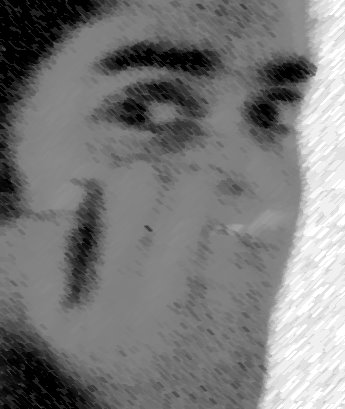well...i work now...let me rephrase that... i write...
am supposedly a travel writer...
but i write about paintings...
surprised ???
well dont be...life is full of lil mishaps like me...
this is one of the sadder pieces i wrote ...but i like it coz its about an art form i was quite happy to discover...i wont go on about constrictive nature of writin for website (the repetitive use of certain keywords)
Thangka Paintings
Thangka Paintings are composite three-dimensional products of art, which derive their themes from Buddhist philosophies. They are essentially religious objects and are of great significance to the Tibetan Buddhists. These beautifully crafted banners are generally hung on monastery walls; they are also an integral part of Buddhist religious processions.
The Tibetan word “ Thang” means a flat surface, which when suffixed with “ ka ”( painting) means “a flat painting” or a “painting on a flat surface”. These paintings are generally done on flat surfaces but they offer the option of being rolled up when not being displayed, a la scroll paintings.
Thangka-the structure
A Thangka comprises a painted or embroidered picture panel, a mounting, which is further embellished with a silk cover, wooden dowels at the top and bottom, leather corners and beautiful metal or wooden decorative knobs on the bottom dowel.
The Philosophy behind the Thangka Paintings
Most art forms, specially the religious ones hardly ever follow the doctrine of artistic intent, rarely, if ever, do they display personal vision and creativity. The overwhelming Buddhist Philosophy dominates the theme and execution of these paintings. Little wonder that most Thangka Painters have remained anonymous, as have the tailors who have made the mountings.
Essentially, Thangkas are records or pictorial depictions of contemplative experiences. Buddhist monks when instructed by their teachers to imagine themselves in specific situation for meditations, use the Thangkas as their reference point.
The themes of Thangka Paintings
Most Thangka Paintings have the tri-dimensional Mandala as the centerpiece. A geometrical representation of the universe, the Mandalas, depicts the enlightened minds and souls of revered Buddhist monks. Most Mandalas have the venerated deity Vajrakaliya or Vajrakumara as the focal point. This fearful deity has the power to transform acts of cowardice and selfishness into acts of wisdom and compassion. He is considered to be a great source of will power for the monks who have to lead ascetic lives. Other religious deities and iconographies too find their place in this complex yet geometrically flawless mode of art.
Some Thangkas represent the deity Shakyamuni in different imaginary places like palaces and secluded monasteries.
Most of these paintings have a complex web of minor figures that signify different aspects of the dominant philosophy. One has to cross various levels of earthly temptations, spiritual redundancy and physical moorings, to reach the center of perfection, which is represented by the deity Shakyamuni. The colors and style of Thangka Paintings
Thangkas, primarily have black, gold and red backgrounds. Some however use multicolored backgrounds too, but they are a rarity. They are mostly painted on cotton canvases and the canvas is tempered with herbal solutions before the painting. The colors used are natural water-soluble pigments. Most Thangkas employ the mathematics of geometry to create systematic grids of angles and lines. These lines are embellished with colorful figures of monks, flora and fauna. The vast palate of colors is used but the dominant ones certainly has to be red, gold, orange and blue. Blue is the color to represent certain deities. The brushstrokes are delicate yet confident and these paintings are characterized by their fluidity.
Thangka Paintings in India
The ancient art of Thangka Paintings is practiced in Buddhist dominated areas of India. Dharmashala , which has a sizable settlement of Tibetans, can be called the hotbed of Thangka Painting in India.
The west has seen Thangka as nothing more than a decorative art piece for all these years this perception is thankfully changing as the west is gradually being sensitized to the Buddhist Philosophy.
Saturday, August 05, 2006
Posted by serendipiduous at 11:47 PM
Subscribe to:
Post Comments (Atom)

6 comments:
congrats on de new job! ;-)
hey you seem to have taken with you my habit of blogging...anyways.
now do u think rasna's class helped you in any lil ways?
where does one read the stuff you write? apart from your blog that is?
@ hutumthumo and Medusa...i most definitely will not expose my typo (well ok theek hain grammatical errors too) ridden write ups to u ...
@Solan ....why why why dont u blog nowadays???
@closetalk...thenk u thenk u ...
I have been looking for sites like this for a long time. Thank you! when will i ovulate when using clomid Central park tennis Christian music web designer portfolio loans Web camera surveillance software Mature chubby pics Minocycline for acne http://www.columbia-cougar-flats-jacket.info/Arearug.html clothes for wheel chair user Liposuction+thigh Tucson x y recorders plotters computer peripheral equipment saunas belgie discount wheelchairs
The Thangka paintings are not only used in decoration but also used to create a beauty.
Post a Comment